1. Christian MS, Evans CEL, Hancock N, Nykjaer C, Cade JE. Family meals can help children reach their 5 a day: a cross-sectional survey of children's dietary intake from London primary schools. J Epidemiol Community Health. 2013; 67:332–338. PMID:
23254183.
2. Department of Science and Technology-Food and Nutrition Research Institute (DOST-FNRI). Philippine Nutrition Facts and Figures 2013: Food Consumption Survey. Taguig: Department of Science and Technology-Food and Nutrition Research Institute (DOST-FNRI);2015.
3. Angeles-Agdeppa I, Denney L, Toledo MB, Obligar VA, Jacquier EF, Carriquiry AL, Capanzana MV. Inadequate nutrient intakes in Filipino schoolchildren and adolescents are common among those from rural areas and poor families. Food Nutr Res. 2019; 63:3435.
4. Department of Science and Technology-Food and Nutrition Research Institute (DOST-FNRI). Philippine Nutrition Facts and Figures 2015: Updating of Nutritional Status of Filipino Children and Other Population Groups Anthropometric Survey. Taguig: Department of Science and Technology-Food and Nutrition Research Institute (DOST-FNRI);2016.
5. Grantham-McGregor S, Cheung YB, Cueto S, Glewwe P, Richter L, Strupp B. International Child Development Steering Group. Developmental potential in the first 5 years for children in developing countries. Lancet. 2007; 369:60–70. PMID:
17208643.
6. Moxley RL, Jicha KA, Thompson GH. Testing the importance of family solidarity, community structure, information access, and social capital in predicting nutrition health knowledge and food choices in the Philippines. Ecol Food Nutr. 2011; 50:215–239. PMID:
21888580.
7. Scaglioni S, Arrizza C, Vecchi F, Tedeschi S. Determinants of children's eating behavior. Am J Clin Nutr. 2011; 94:2006S–2011S. PMID:
22089441.
8. Fisk CM, Crozier SR, Inskip HM, Godfrey KM, Cooper C, Robinson SM. Southampton Women's Survey Study Group. Influences on the quality of young children's diets: the importance of maternal food choices. Br J Nutr. 2011; 105:287–296. PMID:
20807465.
14. Scaglioni S, Salvioni M, Galimberti C. Influence of parental attitudes in the development of children eating behaviour. Br J Nutr. 2008; 99(Suppl 1):S22–S25. PMID:
18257948.
15. Cooke L. The importance of exposure for healthy eating in childhood: a review. J Hum Nutr Diet. 2007; 20:294–301. PMID:
17635306.
16. Lakkakula A, Geaghan J, Zanovec M, Pierce S, Tuuri G. Repeated taste exposure increases liking for vegetables by low-income elementary school children. Appetite. 2010; 55:226–231. PMID:
20541572.
17. Asakura K, Todoriki H, Sasaki S. Relationship between nutrition knowledge and dietary intake among primary school children in Japan: combined effect of children's and their guardians' knowledge. J Epidemiol. 2017; 27:483–491. PMID:
28576447.
18. Cade JE, Frear L, Greenwood DC. Assessment of diet in young children with an emphasis on fruit and vegetable intake: using CADET--Child and Diet Evaluation Tool. Public Health Nutr. 2006; 9:501–508. PMID:
16870023.
19. Christian MS, Evans CEL, Nykjaer C, Hancock N, Cade JE. Evaluation of the impact of a school gardening intervention on children's fruit and vegetable intake: a randomised controlled trial. Int J Behav Nutr Phys Act. 2014; 11:99. PMID:
25128211.
20. Evans C, Hutchinson J, Christian MS, Hancock N, Cade JE. Measures of low food variety and poor dietary quality in a cross-sectional study of London school children. Eur J Clin Nutr. 2018; 72:1497–1505. PMID:
29391590.
21. Christian MS, Evans CEL, Nykjaer C, Hancock N, Cade JE. Measuring diet in primary school children aged 8–11 years: validation of the Child and Diet Evaluation Tool (CADET) with an emphasis on fruit and vegetable intake. Eur J Clin Nutr. 2015; 69:234–241. PMID:
25139558.
22. Nekitsing C, Blundell-Birtill P, Cockroft JE, Hetherington MM. Taste exposure increases intake and nutrition education increased willingness to try an unfamiliar vegetable in preschool children: a cluster randomized trial. J Acad Nutr Diet. 2019; 119:2004–2013. PMID:
31378647.
23. Appleton KM, Hemingway A, Rajska J, Hartwell H. Repeated exposure and conditioning strategies for increasing vegetable liking and intake: systematic review and meta-analyses of the published literature. Am J Clin Nutr. 2018; 108:842–856. PMID:
30321277.
24. Zeinstra GG, Vrijhof M, Kremer S. Is repeated exposure the holy grail for increasing children's vegetable intake? Lessons learned from a Dutch childcare intervention using various vegetable preparations. Appetite. 2018; 121:316–325. PMID:
29158150.
25. Wardle J, Herrera ML, Cooke L, Gibson EL. Modifying children's food preferences: the effects of exposure and reward on acceptance of an unfamiliar vegetable. Eur J Clin Nutr. 2003; 57:341–348. PMID:
12571670.
26. Fildes A, van Jaarsveld CHM, Wardle J, Cooke L. Parent-administered exposure to increase children's vegetable acceptance: a randomized controlled trial. J Acad Nutr Diet. 2014; 114:881–888. PMID:
24091061.
27. Poelman AAM, Delahunty CM, de Graaf C. Vegetables and other core food groups: a comparison of key flavour and texture properties. Food Qual Prefer. 2017; 56:1–7.
28. Cervato-Mancuso AM, Westphal MF, Araki EL, Bógus CM. School feeding programs' role in forming eating habits. Rev Paul Pediatr. 2013; 31:324–330. PMID:
24142314.
29. Cooke L. The importance of exposure for healthy eating in childhood: a review. J Hum Nutr Diet. 2007; 20:294–301. PMID:
17635306.
30. Aguilar FV. Rice in the Filipino diet and culture. PIDS discussion paper series, No. 2005–15 [Internet]. Makati: Philippine Institute for Development Studies (PIDS);2005. cited 2020 April 2. Available from:
http://hdl.handle.net/10419/127896.
31. Caragay RN. Dietary pattern in a Philippine village: its determinants and improvement. Jpn J Health Hum Ecol. 1985; 51:224–238.
32. Gonzales JT, Raaij JV, Narciso ZV. Consumption pattern for fruits and vegetables of some Filipino adolescents in selected public schools in the city of Manila. J Nutr Disord Ther. 2016; 6:1000202.
33. Ransley JK, Taylor EF, Radwan Y, Kitchen MS, Greenwood DC, Cade JE. Does nutrition education in primary schools make a difference to children's fruit and vegetable consumption? Public Health Nutr. 2010; 13:1898–1904. PMID:
20338089.
34. Pem D, Jeewon R. Fruit and vegetable intake: benefits and progress of nutrition education interventions- narrative review article. Iran J Public Health. 2015; 44:1309–1321. PMID:
26576343.
35. Yeom MY, Cho YO. Nutrition education discouraging sugar intake results in higher nutrient density in diets of pre-school children. Nutr Res Pract. 2019; 13:434–443. PMID:
31583063.
36. Choi ES, Shin NR, Jung EI, Park HR, Lee HM, Song KH. A study on nutrition knowledge and dietary behavior of elementary school children in Seoul. Nutr Res Pract. 2008; 2:308–316. PMID:
20016735.
37. Pérez-Rodrigo C, Aranceta J. School-based nutrition education: lessons learned and new perspectives. Public Health Nutr. 2001; 4:131–139. PMID:
11255503.
38. Alamri E. Factors affecting food intake and the role of nutrition education in the understanding and implementation of healthy dietary habits in Saudi adolescent girls [doctoral thesis]. Plymouth: University of Plymouth;2017.
39. Moxley RL, Jicha KA, Thompson GH. Testing the importance of family solidarity, community structure, information access, and social capital in predicting nutrition health knowledge and food choices in the Philippines. Ecol Food Nutr. 2011; 50:215–239. PMID:
21888580.
40. Celik Ates H, Ceylan M. Effects of socio-economic factors on the consumption of milk, yoghurt, and cheese: insights from Turkey. Br Food J. 2010; 112:234–250.
42. Adamo KB, Brett KE. Parental perceptions and childhood dietary quality. Matern Child Health J. 2014; 18:978–995. PMID:
23817727.
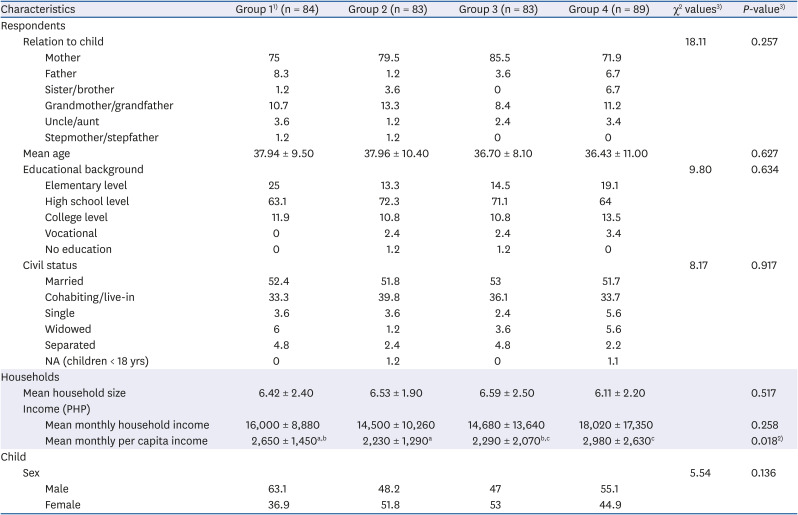

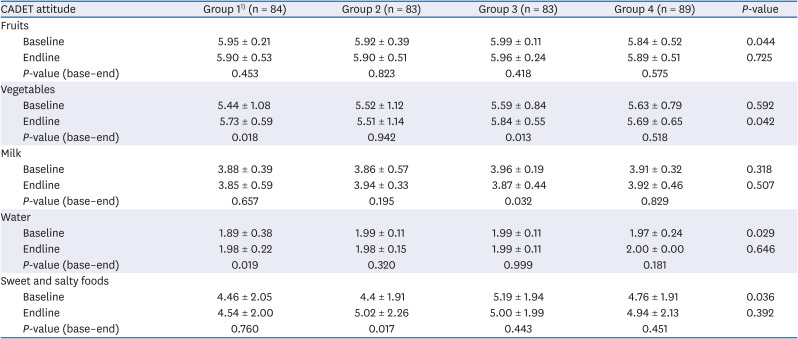

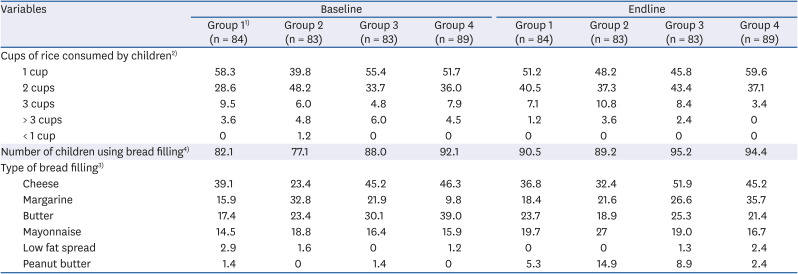
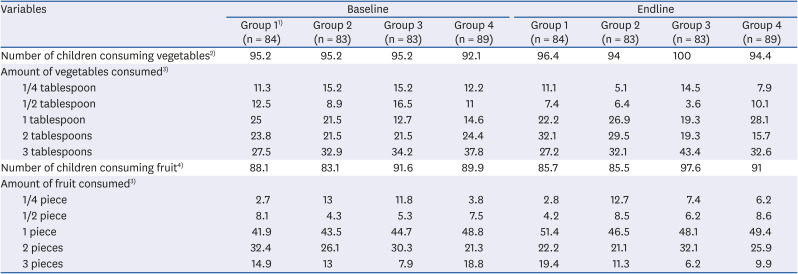

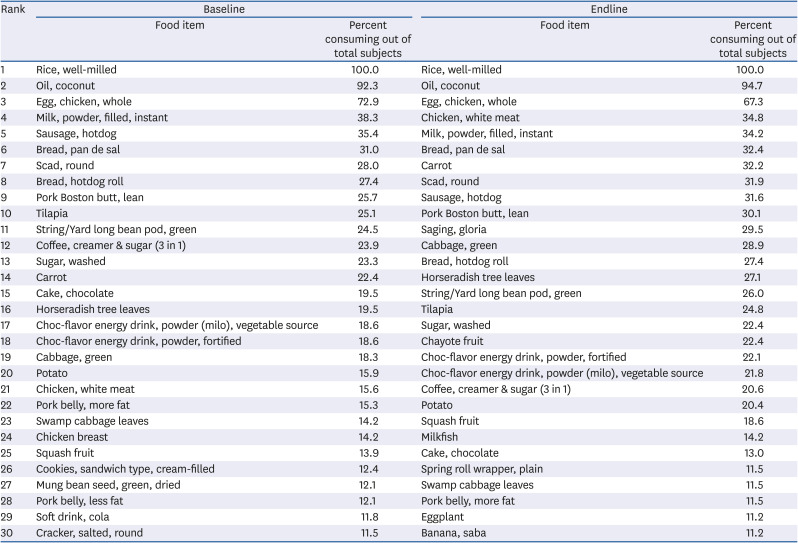




 PDF
PDF Citation
Citation Print
Print



 XML Download
XML Download